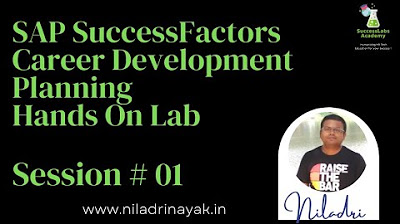Veeam CDP Demo
Summary
TLDRThe video covers the setup and configuration of Veeam Continuous Data Protection (CDP) in version 11, explaining the architecture and components such as the Veeam server, CDP proxy, and IO filter. It highlights the importance of proper DNS configuration for smooth operation, troubleshooting DNS-related errors, and the process of installing the IO filter and setting up proxies. The script also discusses creating and configuring CDP jobs, including recovery point objectives (RPO), retention policies, and guest processing for application consistency, offering valuable insights for implementing CDP effectively in VMware environments.
Takeaways
- 😀 Version 11 of Veeam introduced Continuous Data Protection (CDP) for tighter RTO and RPO points for replicas, differentiating from classic Veeam replication.
- 😀 Veeam CDP uses a VMware API for I/O filtering, allowing the capture of writes as soon as they occur, enabling them to be written to a secondary location.
- 😀 The architecture of Veeam CDP includes a Veeam server, proxies, and a new service called the CDP Coordinator Service that manages the entire process.
- 😀 The I/O filter driver must be installed on the ESXi host to enable write splitting and data capture.
- 😀 Data captured by the I/O filter is stored in memory by the CDP proxy and overflow is written to disk for further processing.
- 😀 Veeam CDP uses delta files to store changes older than one day, which are different from regular VMware snapshots.
- 😀 DNS configuration is critical for Veeam CDP to function properly, as all Veeam and ESXi components must have both A and PTR (reverse DNS) records.
- 😀 Common setup issues for CDP often relate to incorrect DNS settings, which must be resolved for the system to function correctly.
- 😀 To install the I/O filter, right-click on the vCenter server, scan for I/O filters, and follow the prompts to install the filter on the cluster.
- 😀 Proxies for Veeam CDP are similar to regular replication proxies and must be configured with appropriate cache sizes, typically 10GB per VMDK.
- 😀 CDP policies allow you to set RPO and RTO points with the ability to define short-term and long-term retention, as well as application consistency for backup points.
Q & A
What is one of the cornerstone features introduced in Veeam version 11?
-Veeam version 11 introduced Continuous Data Protection (CDP), which provides tighter RTO (Recovery Time Objective) and RPO (Recovery Point Objective) for replicas.
How does Veeam CDP differ from classic Veeam replication?
-Unlike classic Veeam replication, CDP uses a VMware API for I/O filtering instead of relying on VMware snapshots. It captures writes as soon as they go to a host and then writes them to a second location.
What role does the Veeam CDP coordinator service play in the architecture?
-The Veeam CDP coordinator service oversees the entire process, ensuring that the proxies and I/O filters are available, and it manages where to send the data and confirms if data is being captured and written.
What must be installed on ESXi hosts to enable Veeam CDP?
-An I/O filter driver must be installed on the ESXi hosts. This driver uses the VMware API for write splitting and pulls data as needed to send to the CDP proxy.
What is the function of the memory cache in the CDP proxy?
-The memory cache in the CDP proxy temporarily holds the writes as they are being transferred from the I/O filter. If the cache overflows, it can write data to disk for further processing.
What must be configured properly for Veeam CDP to function correctly?
-DNS must be configured properly, ensuring that all Veeam components, ESXi hosts, and related servers (such as vCenter) are resolvable via DNS with both A records and PTR (reverse) records.
What error did the user encounter while setting up the CDP and how was it resolved?
-The user encountered a DNS-related error while installing the I/O filter, which was due to improper DNS setup in their lab. After correcting the DNS issues, the installation proceeded successfully.
What is the role of the CDP proxy in the replication process?
-The CDP proxy captures the data in memory, compresses it, and then sends it to the secondary CDP proxy at the target side for further processing and writing into the data store.
How does the scheduling in Veeam CDP work with RPO and RTO?
-Scheduling in Veeam CDP allows you to set short-term retention (for frequent, low RPO backups) and long-term retention (for more spaced-out, application-consistent recovery points), helping balance recovery speed with data storage needs.
What are the key differences between short-term and long-term retention in Veeam CDP?
-Short-term retention focuses on maintaining a high frequency of recovery points (e.g., every minute), while long-term retention focuses on preserving application-consistent recovery points for a longer period (e.g., hourly, daily backups).
Outlines

This section is available to paid users only. Please upgrade to access this part.
Upgrade NowMindmap

This section is available to paid users only. Please upgrade to access this part.
Upgrade NowKeywords

This section is available to paid users only. Please upgrade to access this part.
Upgrade NowHighlights

This section is available to paid users only. Please upgrade to access this part.
Upgrade NowTranscripts

This section is available to paid users only. Please upgrade to access this part.
Upgrade NowBrowse More Related Video

Automating Veeam Backup with Cisco Intersight Orchestration

Adding a vCenter in Rubrik CDM 5 2

Kubernetes Architecture in 7 minutes | K8s explained

Lab Session 01 SAP SuccessFactors Career Development Planning

Proxy Server Configuration Using Cisco Packet Tracer in Hindi

What is a server? Types of Servers? Virtual server vs Physical server 🖥️🌐
5.0 / 5 (0 votes)